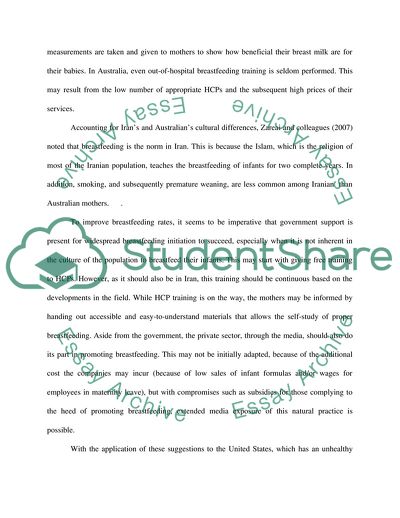Cross-Cultural Perspectives on breastfeeding Essay - 1. https://studentshare.org/medical-science/1753155-creating-a-breastfeeding-culture
Cross-Cultural Perspectives on Breastfeeding Essay - 1. https://studentshare.org/medical-science/1753155-creating-a-breastfeeding-culture.


